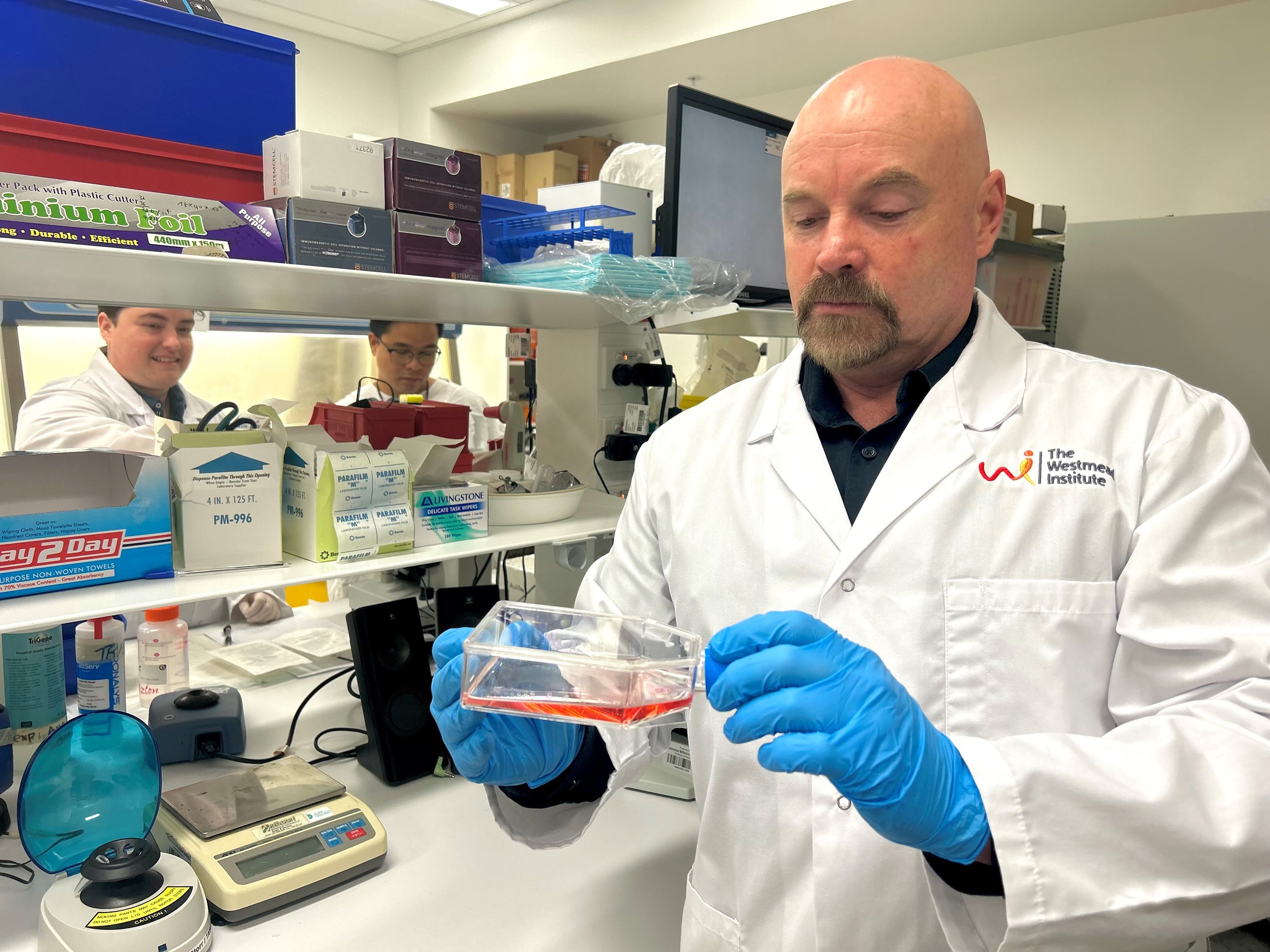February 27, 2024 Print
Congratulations to WIMR’s Professor Wayne Hawthorne and his team who recently received a grant for $3.5 million over three years from JDRF, the leading supporter of type 1 diabetes (T1D) research globally.
This vital funding will allow Professor Hawthorne to continue his groundbreaking pancreatic islet transplantation research, with the aim of making this treatment available to more people suffering from T1D in Australia, and around the world.
Professor Wayne Hawthorne leads WIMR’s Xenotransplantation Research Program, along with being the Director of the National Pancreas and Islet Transplant Laboratories at Westmead Hospital and Professor of Transplantation, Department of Surgery, University of Sydney.
He says, “For 25 years, my research collaborators (Professor Peter Cowan – St Vincent’s Hospital and University of Melbourne, and Mark Nottle – University of Adelaide) and I have received research funding support from JDRF and the National Health and Medical Research Council (NHMRC). This financial support has been integral to the progress made to date, and to the next phase of our research, which aims to make pancreatic islet xenotransplantation suitable and available to patients suffering from T1D.”
What is pancreatic islet transplantation?
T1D is an autoimmune disease that destroys insulin-producing cells located in the pancreas. It impacts more than 130,000 Australians
[1], and 8.7 million people worldwide
[2]. Many people with T1D will develop end-organ complications including cardiac disease, vision impairment, kidney failure and amputation.
Pancreatic islet cell transplantation is a surgical procedure using donated pancreases. In a lengthy process, the pancreatic islet cells are isolated and are transplanted into the liver of patients suffering from T1D, allowing the transplanted islet cells to make and release insulin into the body. Successful pancreatic islet transplantation results in patients reducing their reliance on insulin injections or a pump, often eliminating the need completely.
While this procedure is still in its infancy, it is achieving life-changing results for patients suffering from T1D who experience severe hypoglycaemic unawareness.
WIMR Professors Philip O’Connell and Wayne Hawthorne pioneered pancreatic islet cell transplantation in Australia, performing the first successful transplants in this country. Since then, they have been responsible for its transition into the Australian healthcare system.
Pancreatic islet cell transplantation is now available for patients who live with severe hypoglycaemic unawareness – when the individual is unaware that their blood glucose levels are dangerously low, which can be life-threatening.
To date, almost 200 Australians have essentially been cured of T1D as a result of pancreatic islet cell transplantation.

Professor Hawthorne says, “We have come a long way since we performed the first Australian pancreatic islet transplant at Westmead 22 years ago. Since then, we have worked to improve the procedure and outcomes for patients suffering T1D who are no longer able to control their diabetes with insulin injections or pumps.
“Our research in this field is also informing other areas of transplantation, which is truly gratifying.”
Groundbreaking research to improve pancreatic islet transplantation
Professor Hawthorne’s research now aims to address some of the hurdles faced by researchers and patients. These include:
- Limited availability of donor organs (pancreas) to be able to produce the islets for transplant
- Pancreatic islet cells are fragile and very difficult to isolate
- The need to take life-long immunosuppressive medications can result in serious side-effects including infections and some cancers.
This research project aims to use alternate sources of pancreatic islets to address these hurdles.
Xenotransplantation is the transplantation of animal tissues, cells or organs into human recipients. Clinical studies are now underway around the world, investigating the use of transgenicaly modified pig organs, like hearts and kidneys, to be transplanted into humans.
Professor Hawthorne’s research project aims to use pancreatic islets from specifically genetically modified pigs to increase the number of transplantable pancreatic islets available, and to reduce the reliance on human organ donors and immunosuppressant medications.
He says, “Insulin was developed 100 years ago, and for almost all of that time, patients have received insulin produced from pigs as a lifesaving treatment. Being so similar to humans, pig cells and tissues share many similarities that allow them to be used to produce various therapies such as insulin, heparin and heart valves to treat millions of patients worldwide.”
“However, in order to use live cells and organs from pigs, the pig cells and tissues need to be modified by genetically altering the surface, so they are protected from hyperacute rejection when transplanted into a patient.”
Professor Hawthorne’s team have been developing these techniques for decades and have now produced very special transgenic pig islet cells that prevent hyperacute rejection when transplanted into a recipient. This pre-clinical study will trial these newly developed transgenic porcine islet cells to prove their safety and efficacy.
“Our ultimate goal is to establish xenotransplantation as a safe and effective treatment option for all individuals with T1D, not just a select few. We hope that our research will allow those with T1D to make insulin once again, safely, and without the need for life-long immunosuppression,” says Professor Hawthorne.